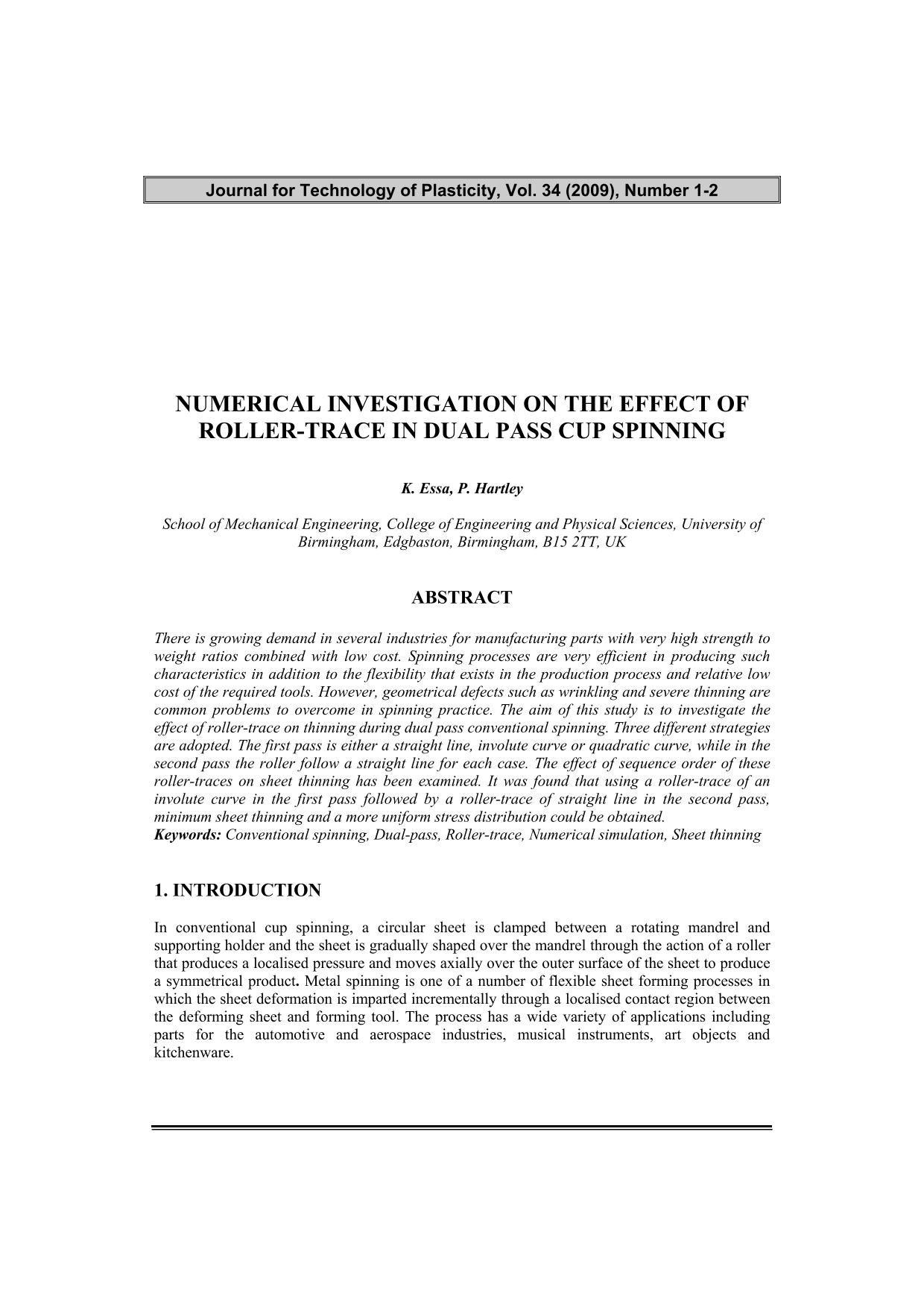Numerical investigation on the effect of roller-trace in dual pass cup spinning

Published 2009-12-25
abstract views: 6 // Full text article (PDF): 2
Keywords
- Conventional spinning,
- Dual-pass,
- Roller-trace,
- Numerical simulation,
- Sheet thinning
How to Cite

This work is licensed under a Creative Commons Attribution 4.0 International License.
Abstract
There is growing demand in several industries for manufacturing parts with very high strength to weight ratios combined with low cost. Spinning processes are very efficient in producing such characteristics in addition to the flexibility that exists in the production process and relative low cost of the required tools. However, geometrical defects such as wrinkling and severe thinning are common problems to overcome in spinning practice. The aim of this study is to investigate the effect of roller-trace on thinning during dual pass conventional spinning. Three different strategies are adopted. The first pass is either a straight line, involute curve or quadratic curve, while in the second pass the roller follow a straight line for each case. The effect of sequence order of these roller-traces on sheet thinning has been examined. It was found that using a roller-trace of an involute curve in the first pass followed by a roller-trace of straight line in the second pass, minimum sheet thinning and a more uniform stress distribution could be obtained.

